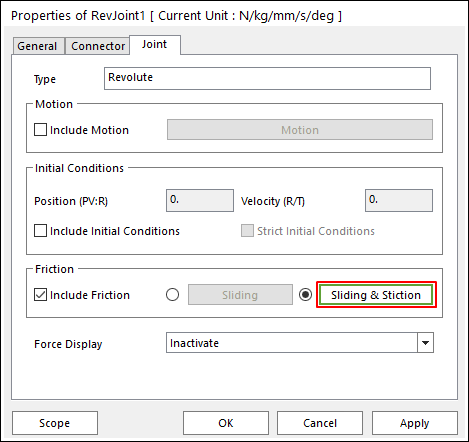
This defines the friction force which contains stiction algorithm on a revolute joint. Include Friction option in Joint property page must be checked and Sliding & Stiction is selected to use the friction force.

Figure 1 RevJoint property page [Sliding & Stiction type]
The parameters are defined in Revolute Joint Friction dialog box of the joint as shown in Figure 2.

Figure 2 Revolute Joint Friction dialog box
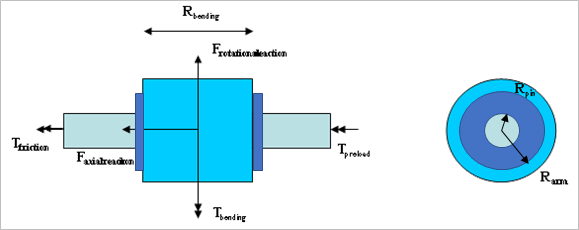
Figure 3 Configuration of Sliding and Stiction Friction Force on Revolute Joint
The frictional torque is calculated according to the following equation:

Where, the inputs into the equation are defined in the following table:
|
Current Friction Coefficient |
|
The coefficient of friction calculated during the simulation is a function of the relative velocity between body surfaces. |
|
Static Friction Coefficient |
|
The coefficient of friction is zero at a zero velocity,
but it smoothly transitions to the static coefficient of friction at
Absolute Threshold Velocity ( |
|
Effect |
|
Checks Stiction or Sliding
|
|
PreTorque |
|
A constant frictional torque that acts during the entire simulation. |
|
Reaction Force |
|
The force in the joint calculated during the simulation in the direction normal to the rotational axis. |
|
|
The force in the joint calculated during the simulation in the direction along the rotational axis. | |
|
Friction Arm |
|
The radius of the larger surface geometry in the revolute joint. |
|
Pin Radius |
|
The radius of the smaller surface geometry in the revolute joint. |
|
Bending Moment |
|
The calculated torque that acts at right angles to the rotational axis. |
|
Bending Reaction Arm |
|
The length of the middle contact surface along the rotational axis. |
|
Maximum Friction Torque |
|
Collisions during contact as well as transitions during sliding forces can result in force spikes. High frictional torques can result from these spikes. This option allows a maximum friction torque to be defined that should correspond to the maximum expected steady-state force. |
Stiction causes the coefficient of friction to be ramped up to the static coefficient of friction once the movement of the surfaces has reached the maximum stiction deformation.
•If the joint velocity is greater than Absolute Threshold Velocity,

Where,  is determined by Figure 4.
is determined by Figure 4.

Figure 4  Graph
Graph
•If the joint velocity is less than Absolute Threshold Velocity,

•Stiction:  ,
,
 ,
,  is determined by Figure 5.
is determined by Figure 5.
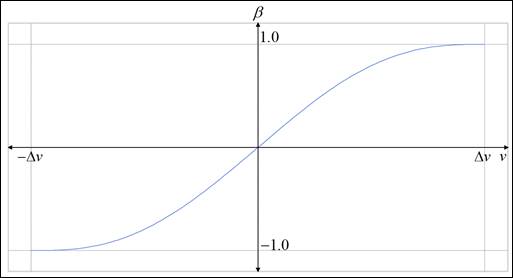
Figure 5a
 Graph, when
Graph, when 
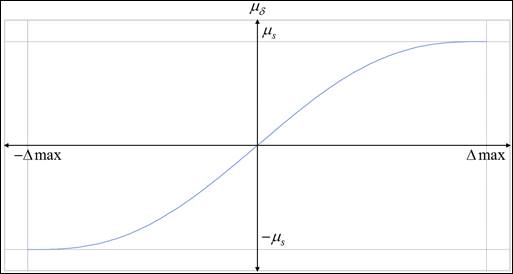
Figure 5b
 Graph, when
Graph, when 
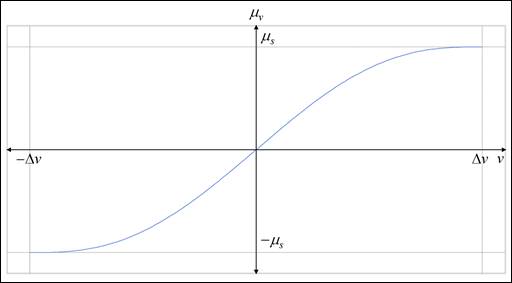
Figure 5  ,
,  ,
,  Graph
Graph
•Sliding:  ,
,  ,
, 
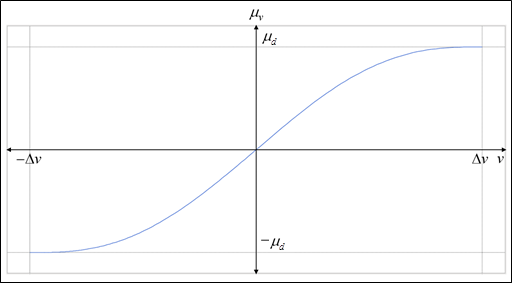
Figure 6  Graph, when
Graph, when 
|
Static Friction Coefficient |
|
The coefficient of friction is zero at a zero velocity,
but it smoothly transitions to the static coefficient of friction at
Absolute Threshold Velocity ( |
|
Dynamic Friction Coefficient |
|
The coefficient of friction smoothly transitions to
Dynamic Friction Coefficient as the sliding velocity exceeds the
Absolute Threshold Velocity ( |
|
Absolute Threshold Velocity |
|
Defines the sliding velocity at which the coefficient of friction is set to the Static Friction Coefficient. Note that the transition to Dynamic Friction Coefficient is complete when the sliding velocity reaches 150% of Absolute Threshold Velocity. |
|
Maximum Stiction Deformation |
|
The distance (offset) that the contact surfaces move from each other when the coefficient of friction transitions from a value of zero to the static coefficient of friction. |